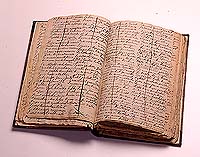History of Education in Finland
Introduction
In order to understand what led to the education system we see today in Finland, it’s important to look back and outline what led up to it.
From 1812 to 1917, Russia controlled Finland and implemented school systems identical to those in Russia, including all classes being taught in Russian in an effort to assimilate the people of Finland to their culture (OECD/PISA 2010, 118).
Cultural Roots and Preservation
Finland had an oral tradition known as the Kalevala that had been passed on by story tellers. They would recite it to convey morality and even the Finnish origin stories. The story tellers traditionally were revered as teachers of history, morality, and language. We can connect this to the culture of respect for teachers today. It was first written down in 1835 and is often cited as the reason Finnish language survived the Russian occupation(Kalevalaseura, 12/11/2013 ).
Independence and War
After Finland declared independence in 1919, the Soviet Union invaded a number of times but was finally forced to give up trying to control Finland after the events of World War II. They did however, have a strong political influence until the early 1980’s (Sahlberg, 2).
Finland was on the mend from the war and was primarily focused on collecting natural resources such as lumber to support their economy. They continued using the Soviet Union structure of education until the late 1960’s. In the 1970’s, education reform began with three key elements (Sahlberg, 3).
- Establishment of a national curriculum. This was to raise the quality of education that all students received. In addition to quality, they were starting to create ways for equal access to education no matter the students’ social, economic, linguistic, racial, or geographical circumstances.
- The requirements to become a teacher were set higher. In addition to the national curriculum for children, a new curriculum for aspiring teachers was also made that balanced theory with hands on experience. It required that those wishing to become teachers would have to earn a master’s degree. The reform also required that teachers earn a reasonable wage. Since the process of becoming a teacher is so difficult, Finnish society gives them as much respect as doctors and lawyers even though they are paid less.
- Increase in the number of people participating in schools on all levels. Primary school was made mandatory for children starting at the ages of seven to 16 years old . This was made possible by creating more equitable access.
Education Reforms in Recent History
The original form was very centralized but later became decentralized in the 1980’s. From the 1970’s to 1990’s the number of students increased in all levels (Lankinen, 12/11/2013).
After the fall of the Soviet Union in 1991, Finland made efforts to join the European Union (EU). Finland suffered from economic depression and the unemployment rate rose to 10%. The Finnish perspective on education changed “…as existing in order to serve the citizen, whereas, in the past, individuals were educated as citizens in order to serve society” (Kivirauma, 5). This perspective was made standard practice in 1999 with state legislation.






